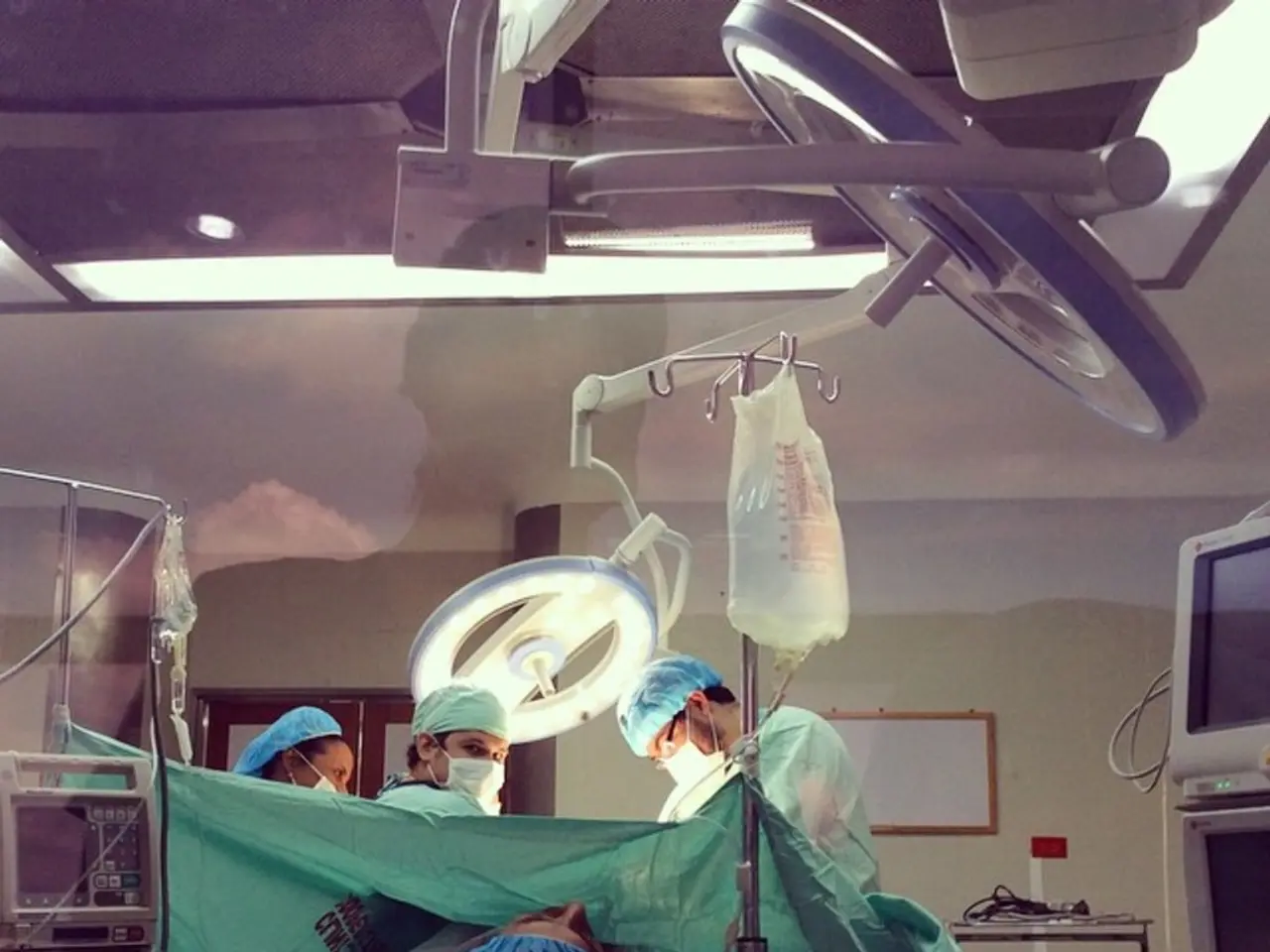Surgical Delivery: Procedural details, potential complications, and postoperative healing process
In the United States, cesarean sections (C-sections) have become increasingly common, accounting for 39.8% of all births in 2017. While most C-sections are performed due to medical necessity, a growing number of elective C-sections on maternal request (CDMR) are also taking place.
A C-section is a procedure where a birth doctor delivers an infant through an incision in the mother's abdomen and uterus. This process can be planned or unplanned, depending on various factors. During the procedure, some hospitals use transparent drapes to allow the mother to observe the procedure. Anesthesia options include general anesthesia, epidural block, and spinal block, the latter of which only numbs the lower half of the body during the procedure.
The rising trend in elective C-sections is influenced by multiple factors. Increasing maternal preference or request is one such factor, with some women choosing cesarean delivery due to fear of labor pain, previous traumatic vaginal deliveries, scheduling convenience, or perceived safety for the baby and themselves.
However, medical considerations and risk factors also play a significant role. Conditions like gestational diabetes mellitus (GDM) and maternal depression are increasingly studied for their association with adverse outcomes, which may influence decisions around cesarean delivery timing and mode. Concerns about neonatal risks such as respiratory issues related to early elective cesarean before 39 weeks impact clinical guidelines and patient counseling.
Healthcare provider practices and hospital settings also impact cesarean section rates. Most births occur in community hospitals, which might have varied protocols and resources influencing cesarean section rates and neonatal outcomes. Rising awareness of risks associated with elective cesarean, such as higher neonatal respiratory morbidity compared to vaginal births at term, is prompting recommendations to avoid early elective cesareans unless medically indicated.
Postpartum hemorrhage concerns and surgical innovations are other factors influencing decision-making about elective cesareans. Rising rates of placenta-related complications have increased cesarean risks, but innovations like bilateral vascular clamps are being trialed to manage complications during cesarean delivery.
While the overall cesarean rate has risen in previous decades, the proportion directly attributable to maternal request without medical indication remains a complex mix of personal choice, clinical risk profile, provider counseling, and institutional policy. The increasing attention to maternal mental health, fetal and neonatal outcomes, hospital practice variation, and surgical risk management are key factors influencing elective cesarean on maternal request in the U.S. over the past decade. These trends underscore a growing emphasis on balancing maternal preference with evidence-based timing and indications to optimize outcomes for mother and baby.
A C-section is an intensive procedure that requires a longer healing process than a vaginal delivery. Recovery typically requires a hospital stay of 2-4 days. Following a C-section, women are likely to experience pain at the incision site, cramping, and bleeding with or without clots for 4-6 weeks. Women should maintain hydration, take medications as directed, rest when necessary, provide support to the incision and abdomen, and speak with a healthcare provider about any concerns or symptoms.
It's essential to note that a C-section comes with risks, including wound infection, blood loss, blood clots, injury to an organ, adverse reactions to medication or anesthesia, and potential complications during future pregnancies. After returning home, healthcare providers recommend restricting physical activity for 4-6 weeks after surgery. Report any symptoms suggesting infection or complications to a healthcare provider, such as fever, worsening pain, increased vaginal bleeding, increased redness at the incision site, drainage or swelling of the surgical incision, breast pain with redness or fever, foul-smelling vaginal discharge, or pain when urinating.
- Maternal depression and gestational diabetes mellitus (GDM) are medical conditions that are being studied for their association with adverse outcomes, potentially influencing decisions about cesarean delivery.
- Anesthesia options for a C-section include general anesthesia, epidural block, and spinal block, which only numbs the lower half of the body during the procedure.
- Concerns about neonatal risks such as respiratory issues related to early elective cesarean before 39 weeks impact clinical guidelines and patient counseling.
- Healthcare provider practices and hospital settings also impact cesarean section rates, with most births occurring in community hospitals that might have varied protocols and resources.
- A QA study might be conducted to understand the factors influencing cesarean section rates and neonatal outcomes in different hospital settings.
- The autoimmune disorder, Raynaud's disease (RA), might affect the cardiovascular health of women during and after pregnancy, potentially influencing cesarean delivery decisions.
- Chronic diseases like cancer, respiratory conditions, and digestive-health issues may require women to consider surgery such as a C-section as part of their therapies and treatments.
- Mental health is increasingly being considered alongside physical health during pregnancy, with conditions like depression and anxiety potentially impacting decisions about cesarean delivery.
- Men's health is also relevant in this context, as conditions like prostate issues or heart problems could potentially influence cesarean delivery decisions for expectant fathers.
- Skin-care is essential postpartum, as women recovering from a C-section should be aware of skin conditions that may develop around the incision site.
- Nutrition plays a crucial role in healing after a C-section, as adequate nutrition can help women recover faster and manage potential complications.
- A growing emphasis on workplace-wellness initiatives may include provisions for women who have undergone cesarean deliveries, such as flexible work arrangements or extended maternity leave.
- Women should discuss the potential impact of a C-section on their eye-health, hearing, and hearing with their healthcare providers, as some complications may arise.
- Fitness-and-exercise routines should be adjusted postpartum to accommodate recovery from a C-section, and women should speak with their healthcare providers about safe exercise options.








